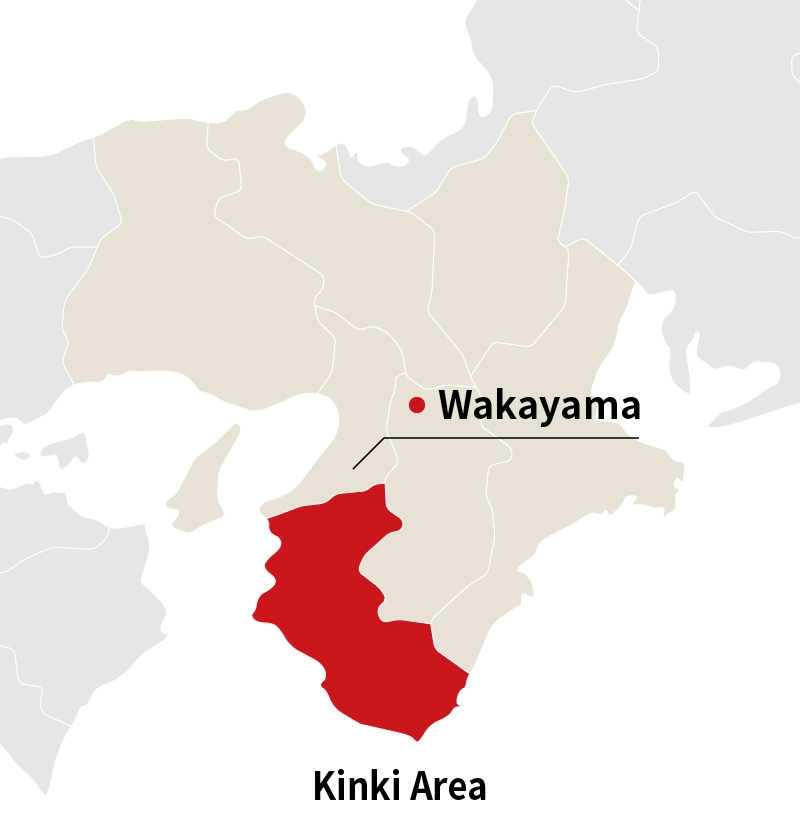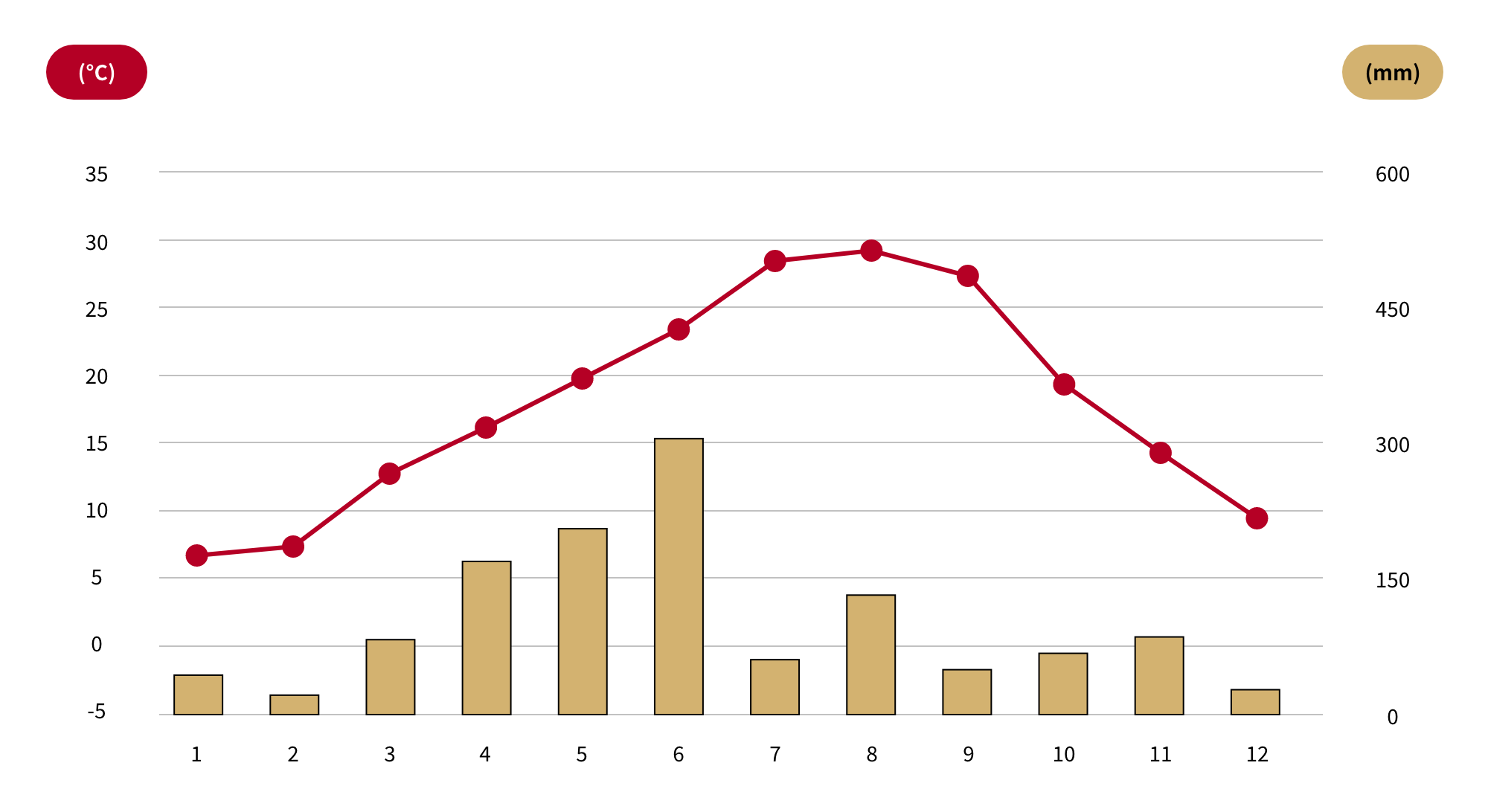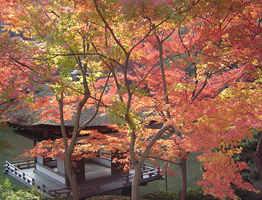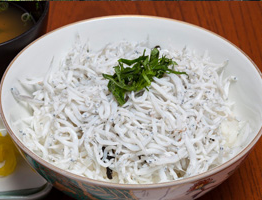Reasons to Choose Japan
Life in Japan by Specific Areas
Wakayama
Summary
Facing the Pacific Ocean, Wakayama Prefecture is located in the southwestern part of the Kii Peninsula, the largest peninsula in Japan. It is a region full of natural blessings and historical assets. In addition, the warm climate and abundant nature give blessings to mountains, rivers and the sea where nurture many tourism resources and products.
 *This map does not include topographical features and island areas and does not cover the entire area of Japan.
*This map does not include topographical features and island areas and does not cover the entire area of Japan.
Access
- If arriving by plane
-
There is also Nanki-Shirahama Airport in Wakayama Prefecture's Nanki-Shirahama area.
From Tokyo
Haneda Airport
2 hours 50 minutesWakayama Station
- If arriving by Shinkansen or train
-
From Tokyo
Tokyo Station
4 hoursWakayama Station
Famous places / spots recommended by locals

Sacred Sites and Pilgrimage Routes in the Kii Mountain Range
It is a world heritage site that is rare in the world, connecting three sacred sites of Kumanosanzan, Koyasan, Yoshino-Omine with pilgrimage route that straddling Wakayama, Nara and Mie prefectures.
Photo: Public Interest Incorporated Association Wakayama Prefecture Tourism Federation

Nanki Shirahama Onsen
A famous hot spring village which is also known as "The Three Great Hot Springs in Japan". Its history is very old, and there is a description in Nihon Shoki that successive Emperors of that time visited here. Nowadays, it is one of the best resort areas in Kansai where hotels and inns are lined up. Everyone is allowed to enjoy the public bath not only the guests.
Photo: Public Interest Incorporated Association Wakayama Prefecture Tourism Federation
Foods recommended by locals
-

Wakayama Ramen
It is called "Chūka Soba" in Wakayama and is served at specialty stores or inexpensive restaurants as local ramen. Pork bones are used and mainly divided into two types: soy sauce-based and rich pork bone soy sauce-based. The noodles are narrow straight noodles, and it is always being boiled slightly softer.
-

Kishu Umeboshi (salted plums)
Plums from Wakayama Prefecture are used to produce large, thick and soft umeboshi in Inami Town, Minabe Town, Tanabe City and Nishimuro District Beginning with the recommendation for cultivation given by Kishu Tanabe Han, in Meiji era, plum production and processing began to be carried out consistently.
Climate (temperature / precipitation)
Wakayama Prefecture is long vertically, meaning the northern and southern regions have different climates. The northern region, including Wakayama City, has a climate characteristic of the Seto Inland Sea, with stable weather and humidity levels throughout the year and low rainfall. The southern region, on the other hand, has a Pacific climate, with warm temperatures due to the influence of the Kuroshio Current, frequent typhoons, and very high rainfall. The prefecture as a whole gets long hours of sunshine, with relatively cool summers and warm winters.
Monthly temperature/precipitation

(Source: Japan Meteorological Agency)
Cost of living
-
Rent
37,171 yen
-
Electricity, gas, and water costs
7,909 yen
-
Ramen
(Eating out)759 yen
-
White bread (1 kg)
586 yen
-
Milk (1ℓ)
241 yen
*Source
- Rent
“Housing and Land Survey: 2023,” Portal Site of Official Statistics of Japan
Average rent per month (excluding free rent) for privately rented apartments/houses (exclusively residential dwelling) with a total floor area of 29m2 or less in each prefectural capital - Electricity, gas, and water costs
“Family Income and Expenditure Survey: 2023,” Portal Site of Official Statistics of Japan
Per capita expenditure calculated as the monthly average of total annual expenditures on utilities (electricity, gas, and water) per household in each prefectural capital, divided by the average number of members in each household - Eating out (Ramen) / White bread (1kg) / Milk (1ℓ)
“Retail Price Survey (Trend Survey): August 2024,” Portal Site of Official Statistics of Japan
Related links
Number of international students by country
Vietnam
China
Indonesia
Total number of international students in Japan: 279,274
Total number of international students in Wakayama Prefecture: 556
Based on 2023 “Annual Survey of International Students in Japan”
List of universities in each area
If an area has nine schools or less with information published in the “School & Program search” section of the website, the names of the schools are listed in no particular order. If there are 10 or more schools, those schools will not be posted on this page. Click the “Go to School & Program search” button and use the search function to see a list of the schools.











